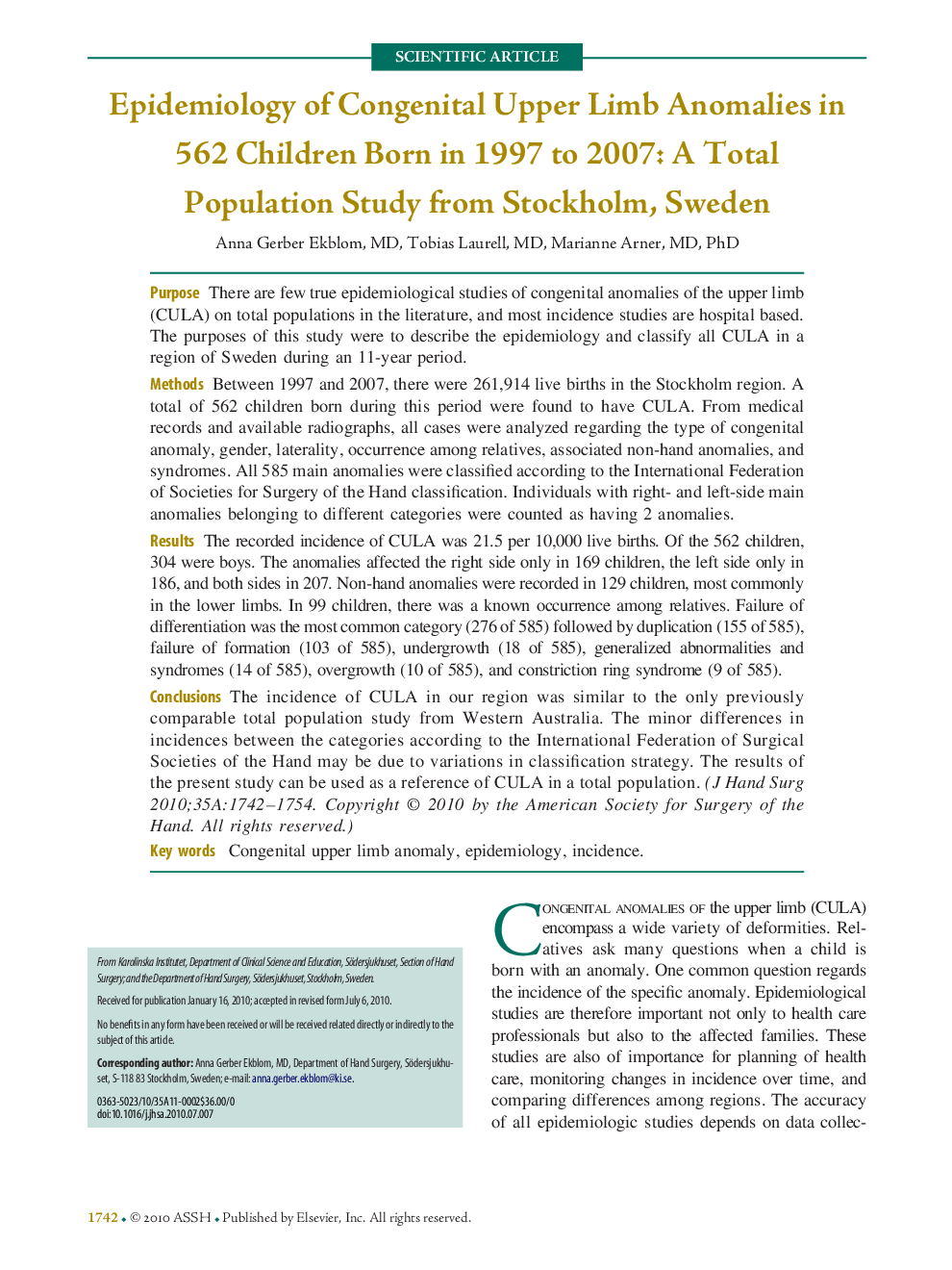| کد مقاله | کد نشریه | سال انتشار | مقاله انگلیسی | نسخه تمام متن |
|---|---|---|---|---|
| 4070025 | 1604415 | 2010 | 13 صفحه PDF | دانلود رایگان |

PurposeThere are few true epidemiological studies of congenital anomalies of the upper limb (CULA) on total populations in the literature, and most incidence studies are hospital based. The purposes of this study were to describe the epidemiology and classify all CULA in a region of Sweden during an 11-year period.MethodsBetween 1997 and 2007, there were 261,914 live births in the Stockholm region. A total of 562 children born during this period were found to have CULA. From medical records and available radiographs, all cases were analyzed regarding the type of congenital anomaly, gender, laterality, occurrence among relatives, associated non-hand anomalies, and syndromes. All 585 main anomalies were classified according to the International Federation of Societies for Surgery of the Hand classification. Individuals with right- and left-side main anomalies belonging to different categories were counted as having 2 anomalies.ResultsThe recorded incidence of CULA was 21.5 per 10,000 live births. Of the 562 children, 304 were boys. The anomalies affected the right side only in 169 children, the left side only in 186, and both sides in 207. Non-hand anomalies were recorded in 129 children, most commonly in the lower limbs. In 99 children, there was a known occurrence among relatives. Failure of differentiation was the most common category (276 of 585) followed by duplication (155 of 585), failure of formation (103 of 585), undergrowth (18 of 585), generalized abnormalities and syndromes (14 of 585), overgrowth (10 of 585), and constriction ring syndrome (9 of 585).ConclusionsThe incidence of CULA in our region was similar to the only previously comparable total population study from Western Australia. The minor differences in incidences between the categories according to the International Federation of Surgical Societies of the Hand may be due to variations in classification strategy. The results of the present study can be used as a reference of CULA in a total population.
Journal: The Journal of Hand Surgery - Volume 35, Issue 11, November 2010, Pages 1742–1754